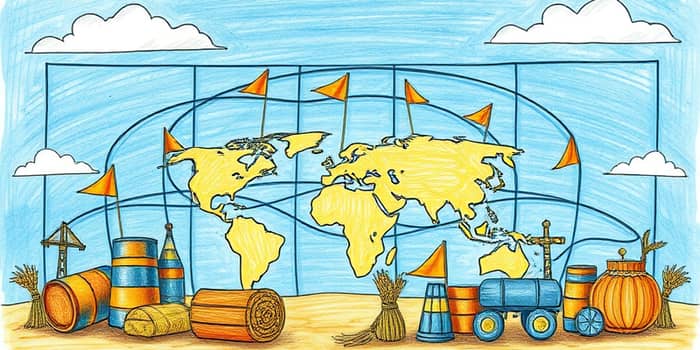
After twelve months of dramatic swings, global commodity markets are finding their footing. As we move into the second half of 2025, key indicators point toward modest declines or stabilization across energy, metals, and agricultural sectors. This shift offers relief to producers, consumers, and investors alike.
In this in-depth analysis, we outline the forces driving this newfound balance, detail the latest forecasts, and offer practical guidance on navigating a landscape still shadowed by uncertainty.
Data from the World Bank, Fitch Solutions, and other authoritative sources converge on a common story: after a 2% rise in the Aggregate Commodity Price Index in 2024 and a sharp 14% drop in 2023, prices are expected to slip 1% in 2025. Improved supply, shifts in global economic growth trajectories, and easing policy uncertainty are at the heart of these projections.
Although the broad trend is one of stabilization, sectoral nuances persist. Energy prices are forecast to experience the largest drop, while metals and agricultural markets moderate more gently. Even within these segments, specific commodities exhibit divergent paths.
The energy complex has been the most volatile over the past two years. Still, mid-2025 brings encouraging signs of balance. Oil prices, which spiked in early 2024, are projected to average between $70 and $85 per barrel in 2025, down from higher 2024 levels. According to the World Bank’s energy price index, a 17% fall is expected in 2025, followed by another 6% decline in 2026.
In April 2025 alone, oil fell 8%, reflecting mounting concerns over economic outlook and ample supply. Meanwhile, natural gas markets show regional divergence: prices in the US remain steady or slightly higher on robust domestic output, while European prices edge up due to LNG import competition. Growing US LNG exports are creating a global supply buffer, further softening price spikes.
Industrial metals prices rose just 2.5% in 2024 but then dropped 7% in April 2025 due to weaker demand and stronger inventories. Mild declines are expected through 2026 as manufacturers optimize supply chains.
Agricultural commodities, once beset by dramatic swings, are also settling into a more predictable range. Overall, farm prices are forecast to fall 1% in 2025 and another 3% in 2026. However, key staples and livestock display varied trajectories:
Multiple factors combine to restore equilibrium in commodity markets. While each has its own weight, their interplay shapes the broader trajectory:
Despite encouraging signs, markets are far from immune to shocks. Stakeholders must remain alert to potential flashpoints:
Geopolitical tensions—in the Middle East, Ukraine, and other hotspots—can quickly tighten energy and grain supplies. Ongoing US-China trade disputes introduce uncertainty for metals and agricultural exports. Meanwhile, extreme weather events, fuelled by climate change, threaten sudden swings in crop yields and livestock output.
Monetary policy shifts, such as unexpected interest rate moves, can also reverberate through commodity markets, impacting financing costs and currency valuations.
To thrive amid stabilization—and brace for future ups and downs—producers, investors, and policymakers should consider the following:
As mid-2025 unfolds, the era of relentless commodity turbulence appears to be easing. While not all segments move in harmony, the aggregate picture is one of broad-based stabilization and gradual decline. This transition brings both relief and fresh challenges.
Market participants who embrace adaptive strategies—diversification, risk management, and collaborative policy engagement—will be best positioned to navigate the remaining uncertainties. With vigilance and innovation, the global economy can harness this period of calm to build more resilient commodity systems for the future.
References













